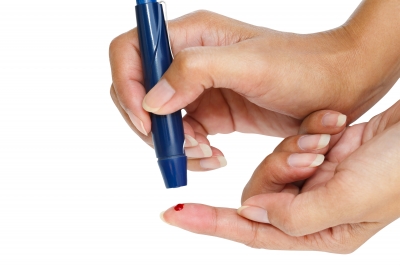According to the Center for Disease Control and Prevention, diabetes type 2 is increasing in epidemic proportions in children. Almost never heard of twenty years ago, the obesity problem and a diet high in overly-processed foods are causing an alarming rate of diabetes in children. In addition to screening younger children for type 1, certain symptoms may warrant scientific tests that can detect the increasing incidence of diabetes type 2 in older children.

What is Diabetes?
Once food is broken down in the digestive system and converted into glucose, the bloodstream disperses this form of sugar to the body cells for nourishment and energy. The pancreas responds to high levels of blood sugar or glucose by secreting a hormone known as insulin and opens the door to the cell. In diabetes, the pancreas does not produce adequate insulin and the blood sugar does not feed the body cells. As the high level of glucose continues to circulate in the blood, body systems are slowly damaged over time.
Warning Signs
If a child is overweight or obese and sedentary, they may be affected by diabetes. Children who have relatives with diabetes will have a higher risk for the disease as children and as adults. A diet high in overly-processed foods, colas and high content carbohydrates can affect the ability of the pancreas to supply an adequate amount of insulin and for this a type 2 diabetes screening would be advantageous. Girls seem to be more susceptible to these changes in blood sugar than boys
Signs and Symptoms in Children
Children with diabetes type 1 or 2 may exhibit symptoms gradually and over time. Screening is an important tool for detecting the disease and preventing the damage and injury to the body tissues and organs. Signs and symptoms of this disease may include some or all of the following:
•Increased thirst and excessive urination
•Ravenous hunger that occurs shortly after meals
•Weight loss despite an increase in food intake
•Fatigue and weakness despite adequate sleep and rest periods
•A complaint of blurry or fuzzy vision
•Darkened skin on armpits or the neck area
•Frequently reoccurring infections, colds or slow wound healing
Tests for Diabetes in Children
In addition to blood sugar tests taken in the urine or blood draws, a glucose tolerance test is the best screening tool available. A blood sample is taken while the child is fasting. Next, the child is provided with a cup of sugary fluid. Blood draws are then performed every 30 to 60 minutes to test how the insulin is handling the breakdown of sugar levels in the body. The test is usually performed for three hours in a physician’s office or laboratory. If the child’s blood sugar levels remain high and abnormal during the test, the physician will run further tests to verify the diagnosis and begin appropriate treatment for diabetes.
Screening for Children
Children should be screened for diabetes type 1 and 2 at an early age, but be aware of changes that may warrant further testing in older children and teenagers. A child who is obese, overweight and sedentary is at a higher risk for diabetes. Observe the signs and symptoms and report them to your physician immediately for testing.
Michael Smith is a keen health blogger and often contributes to blogs across the health niche, check out more of Michael’s work at Follow Health.





